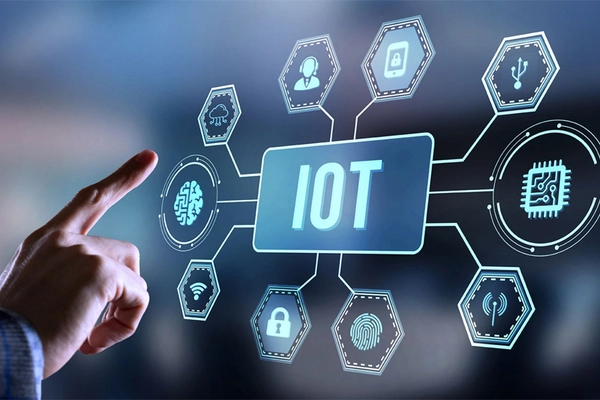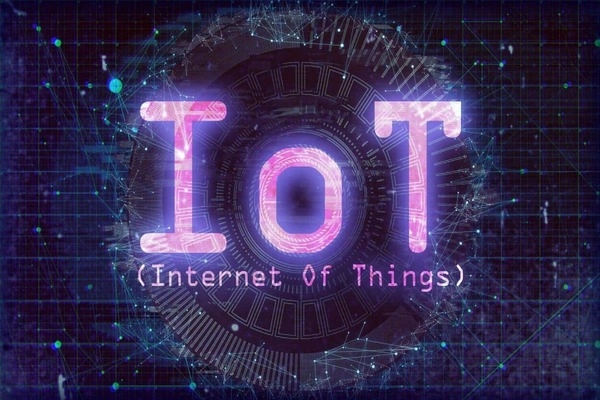In the era of Industry 4.0, IoT devices (Internet of Things) are gradually becoming an indispensable part of daily life and business operations. From smart home appliances and home monitoring systems to industrial machinery, IoT devices are transforming how we live, work, and manage data. This article will provide a detailed explanation of IoT devices, who uses them, how they operate, their benefits, as well as the advantages and disadvantages of each type, and criteria for choosing a reliable provider.
What are IoT devices?
IoT devices are electronic devices capable of connecting to the Internet and exchanging data with each other or with remote control systems. They are equipped with sensors, software, and communication technologies to collect information, transmit data, and perform programmed actions.

The use of IoT devices has enabled automation, intelligent monitoring, and optimization of processes in both daily life and industrial production. Thanks to IoT, everything from light bulbs, refrigerators, and air conditioners to production lines can be connected and controlled remotely, creating a smart ecosystem.
Who uses IoT devices?
IoT devices are not limited to a specific group of people or industry. They serve a wide range of users, from individuals and households to large businesses and manufacturing organizations.
The benefits of using IoT devices vary depending on the needs of the user: for consumers, IoT improves quality of life, saves time, and optimizes energy usage; for businesses, it supports process monitoring, enhances production efficiency, and reduces costs.
IoT devices for consumers
Common IoT devices in everyday life include:
- Smart homes: light bulbs, air conditioners, door locks, and security cameras that can be controlled via smartphone.
- Wearable devices: smartwatches and health trackers that monitor heart rate, steps, and sleep patterns.
- Smart appliances: refrigerators, washing machines, and microwaves connected to the network for remote monitoring and control.
These IoT devices help consumers save time, increase convenience, and enhance safety in daily life.
IoT devices in industrial production
In industry, IoT devices play a key role in digitalizing and automating production:
- Smart machinery: monitors machine status, automatically reports errors, and reduces downtime.
- Warehouse management systems: track inventory locations and quantities, predict demand, and optimize storage.
- Environmental sensors: monitor temperature, humidity, and air quality in production lines.
Implementing IoT devices in production helps businesses improve productivity, reduce operational costs, and ensure product quality.
How do IoT devices work?
The operation of IoT devices is based on three main components: sensors, network connectivity, and data management platforms.

- Sensors: Collect information from the surrounding environment, such as temperature, humidity, light, and motion.
- Network connectivity: Transmit the collected data to management systems via the Internet, Wi-Fi, 5G, or LPWAN networks.
- Data analysis and control: The IoT platform processes the data, issues alerts, controls devices, or provides information to users.
Thanks to this mechanism, IoT devices can operate continuously, automate tasks, and help users make intelligent decisions based on real-time data.
Benefits of using IoT devices
Using IoT devices offers significant advantages:
- Time and cost savings: Reduces manual work, enables remote monitoring, and optimizes resources.
- Enhanced safety and security: Early warning systems detect issues, ensuring the safety of people and assets.
- Improved user experience: Optimizes home convenience and customer services.
- Increased production efficiency: Monitors and controls production lines, predicts maintenance, and minimizes material waste.
These benefits make IoT devices an essential trend in modern life and industrial operations.
Advantages and disadvantages of consumer IoT devices
Advantages
- Convenient, easy to control and monitor remotely.
- Enhances safety and saves energy.
- Improves quality of life and user experience.
Disadvantages
- High cost, especially for advanced devices.
- Security risks if software is not regularly updated.
- Dependence on Internet connectivity; loss of connection can affect functionality.
Advantages and disadvantages of IoT devices in industrial production

Advantages
- Optimizes production processes and reduces operational costs.
- Monitors machine conditions and predicts maintenance needs.
- Increases productivity and product quality.
Disadvantages
- High initial investment costs.
- Requires a skilled technical team for operation and maintenance.
- Risk of cyberattacks and data loss if security measures are inadequate.
Top 5 most popular IoT devices today
- Smart surveillance cameras: Monitor activity, detect motion, and send real-time alerts.
- Smart speakers: Voice-controlled and can connect with other devices in the home.
- Smart lights: Adjustable brightness, scheduling, and remote control.
- Environmental sensors: Monitor temperature, humidity, and air quality at home or in factories.
- Wearable devices: Track health metrics and provide data to users or healthcare professionals.
These IoT devices are widely used by both consumers and businesses due to their convenience and intelligent connectivity.
Criteria for choosing a reliable IoT device provider
To ensure quality and security, selecting a reputable IoT device provider is crucial. Key criteria to consider include:

- Product quality: Durable devices with advanced technology and stable connectivity.
- Technical support and warranty: Reliable after-sales service with regular software updates.
- Security: Providers offer data protection solutions to prevent unauthorized access and cyberattacks.
- Scalability: Systems can be expanded to accommodate more devices or technology upgrades.
- Customer reviews: Consider feedback from previous users to ensure the provider’s reliability and product quality.
Choosing the right provider helps maximize the effectiveness of IoT devices, minimize risks, and ensure long-term benefits.
IoT devices are becoming a key foundation in modern life, from household conveniences to smart production lines. With their ability to connect, automate, and optimize data, IoT devices not only enhance quality of life but also boost productivity and business efficiency. However, to fully leverage the benefits of IoT, users need to understand the products, evaluate their advantages and disadvantages, and select a reputable provider.
